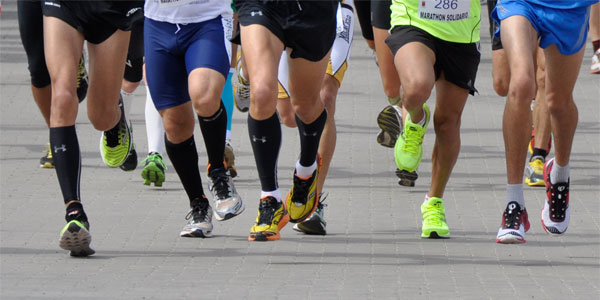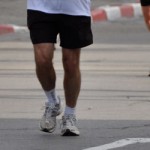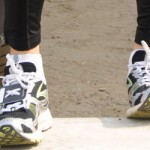How you approach your Injury Treatment, can be your salvation when it comes to recovery.
It is a major challenge to discuss in detail the nature and treatment of all running injuries. Knowing the cause and providing detailed information regarding the treatment of injuries is always made more difficult without being able to analyse the symptoms. In our approach we will attempt to provide you with sufficient tips to consider the extent of your injury and what course of action to take next. To train intelligently is always the best approach however being sensible at all times is often something which gets ignored and often injuries do occur. Often catching an injury early and treating it with the basic guidelines listed below can avoid the injury becoming chronic.
Basic Guidelines
The question always asked is whether one should run with an injury? Some runners stop running at the drop of a hat when there is the slightest niggle and then some runners ignore all the warning signals. Finding the happy medium is important and knowing when not to run and when running isn’t leading to further damage which may push the niggle into the chronic stage. When niggles occur it is often wise to reduce your training intensity and weekly mileage. Also if the niggle leads to you favouring the other leg because of the discomfort this can lead to further long-term complications and the runner should proceed with caution. Do not medicate the injury or try to numb it out with ice, as this is just a ‘numbingly dumb’ approach and will place you on the ‘road to nowhere’. Keeping your intelligence factor is a handy way to avoid serious injury and moving towards a little cross-training to maintain your cardio-vascular fitness while you are unable to continue with the weight bearing (see the word jarring) of running shows a level of alternative thinking. There are numerous activites one can participate in which will allow you to exercise without aggravating the injury further and depending (use intelligence factor) on your predicament the following forms of exercise can be considered: Walking (depending on injury), cycling (learn about spinning), swimming, deep-water running, elliptical trainer, rowing, stair-master, and cross-country ski machines. If the niggle is still persistent after a week there are further points to be taken into consideration to bring you back to training. Below are some further tips.
- Recognize the difference between fatigue and pain due to an injury. Unfortunately, endorphins (the chemicals the body produces from aerobic exercise that make you feel good . . . runner’s high) mask pain. Listen to your body and respect the feedback it is providing you.
- Some minor discomforts diminish in intensity and/or disappear once the muscles have had a chance to warm up. Be very cautious in this situation, as you don’t want to cause more serious damage to the injury site.
- Above all, if pain becomes more intense while running, do not continue. Instead, walk and begin treatment. Above all, do not become a slave to your training schedule! If you continue to train and delay treatment, the injury will almost assuredly become more serious, thus jeopardizing the possibility of even being able to participate in your target event.
Injury Treatment
- Inflammation (characterized by pain, swelling, redness, and warmth) is often the by-product of many injuries. If inflammation occurs in, or adjacent to an injury site, treat the area with ice (see icing guidelines below). Above all, do not treat the area with heat of any kind (wet or dry) for several days.
- Consider taking several days off from running along with any other types of sports that cause shock, pounding, jarring, etc. to the injured area.
- Try using some anti-inflammatory medication (e.g., ibuprofen) for injuries that are inflamed. Be careful not to exceed the recommended dosage as these products can cause a variety of internal problems.
- Heat is a good therapeutic/relaxation measure after inflammation of the injury site has been reduced significantly or eliminated.
- If, after these approaches listed above fail, consider visiting a physician (who is very familiar with a variety of sports injuries and has experience treating runners) for both an assessment of the injury and treatment advice. The most important information a physician can provide is whether: (1) you can continue to run without modification of your training schedule, (2) continue to run with a reduced workload, (3) rest the injury site (e.g., no running), and/or (4) add some cross-training activities to both maintain cardio-vascular fitness and to strengthen the injury site. When in doubt regarding the seriousness of an injury, see a physician.
Icing Guidelines
- Use an ice cup – Fill a paper cup with water and then place it in the freezer. When completely frozen, the top of the paper cup can be peeled away to expose the ice.
- Massage the injured area with the ice cup for approximately 10 minutes or until the area is numb. It does little good to continue icing the area after that time. Repeat this process, icing the injury site two hours later at a minimum (or more frequently as possible).
- If you are unable to create a frozen ice cup, use an ice pack or a package of frozen vegetables (tiny peas work great) to treat the injured area.
Article by Dave Spence – Resident coach Cape Town
View the articles under the Injury and Treatment section:
- To reduce injury risk, you need to minimise impact
- Injury Treatment Approaches
- Leg & Foot Cramps
- Water Running
- The Gift of an Injury
- Injury prevention tips
- The best predictors of injury
- The Comeback from Injury
View: Injury guide – Sites of the Most Common Running Injuries





























